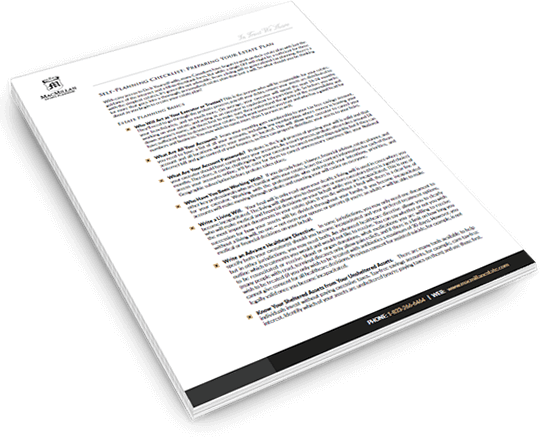
At MacMillan Estates, we believe that it is important for business owners and investors to understand all their options when it comes to managing their assets and reducing taxes. While many private business owners wonder whether they should take a salary or dividends, which are both taxable, few people consider the use of a tax-free dividend paid from the Capital Dividend Account (CDA) of a corporation to a Canadian resident. This means that private corporate business owners could have access to more tax-free funds than expected.
What Goes In A Capital Dividend Account?
While upcoming Liberal proposals regarding tax planning could result in changes to how the CDA works, here are several ways that CDA currently tracks which amounts are taxable for a private corporation and what is to be distributed to shareholders with no personal tax:
- If the capital gain earned by a company is 50% taxable, the non-taxable half is added to the CDA
- When a company pays a capital dividend to another company, when the latter company has invested in the former, that amount is added to the CDA as non-taxable.
- When a company sells a specific eligible capital property (ECP) in the year, 50% of that gain is added to the CDA. Changes in rules regarding the ECP in the past year means that now you can pay out the CDA as early as the day after the sale, rather than waiting until the first day of the following tax year.
- Non-taxable proceeds from life insurance policies received by a company are added to the CDA.
- The CDA can be reduced when a company incurs a capital loss where 50% of the amount lost will not be deductible in current or future years against capital gains.
How To File & Declare Capital Dividends
There are several procedures one should consider when looking to file and declare a capital dividend.
- The company must make an election on Form T2054 - Election for a Capital Dividend Under Subsection 83(2), to be filed with the Canada Revenue Agency (CRA) on or before the day that the dividend is paid or becomes payable, in order for that dividend to be tax-free. Accompanying Form T2054 should be a certified copy of the Director(s) resolution to authorize the capital dividend, as well as a detailed calculation of the CDA at a date prior to the capital dividend being paid or becoming payable. Filing Form T2054 late will result in a penalty.
- Should the CRA review the election and discover that the capital dividend paid or declared is too high, then a penalty equal to 60% of the excess available over the CDA balance will arise.
- Under the assumption that the corporation in question has always been private, then the CDA is cumulative from the date of incorporation. If a Form T2054 has not been previously filed by the company, then a review of the historical capital gains, losses, and corporate activities since incorporation to the date of the dividend will be required to determine the accurate CDA balance.
- When you incur a loss, the CDA balance is reduced. Since the CDA is paid according to a moment in time, the CDA dividend should be paid when the account reaches a material amount different to each person, before a capital loss reduces the account balance. Should you pay a capital dividend followed by a capital loss, the account and go negative.
Non-resident shareholders will require further consideration, since CDA payments to non-Canadian residents might involve associated taxes.
Adjusting Journal Entries
There are some corporations that may choose to indicate their capital dividends through adjusting journal entries (AJE) rather than actually paying it. The shareholder is then credited instead, creating a tax-free loan where the company owes the shareholder. According to the CRA, an AJE cannot constitute fund payment without a demand promissory note that the recipient accepts as absolute payment. At a minimum, this also requires an indication of intention in the resolutions for the CRA to consider the dividend paid and received.
Determining Balance
It can be difficult to determine the CDA when a corporation has had multiple accountants or has previously merged with other corporations. To verify your account, you can file Schedule 89 with the CRA. Older companies especially should keep in mind that only part of the years may be verified.
Feel free to speak with a MacMillan consultant about areas of potential, as with the Canadian Dividend Accounts, that could help you better manage your company’s assets and finances.





